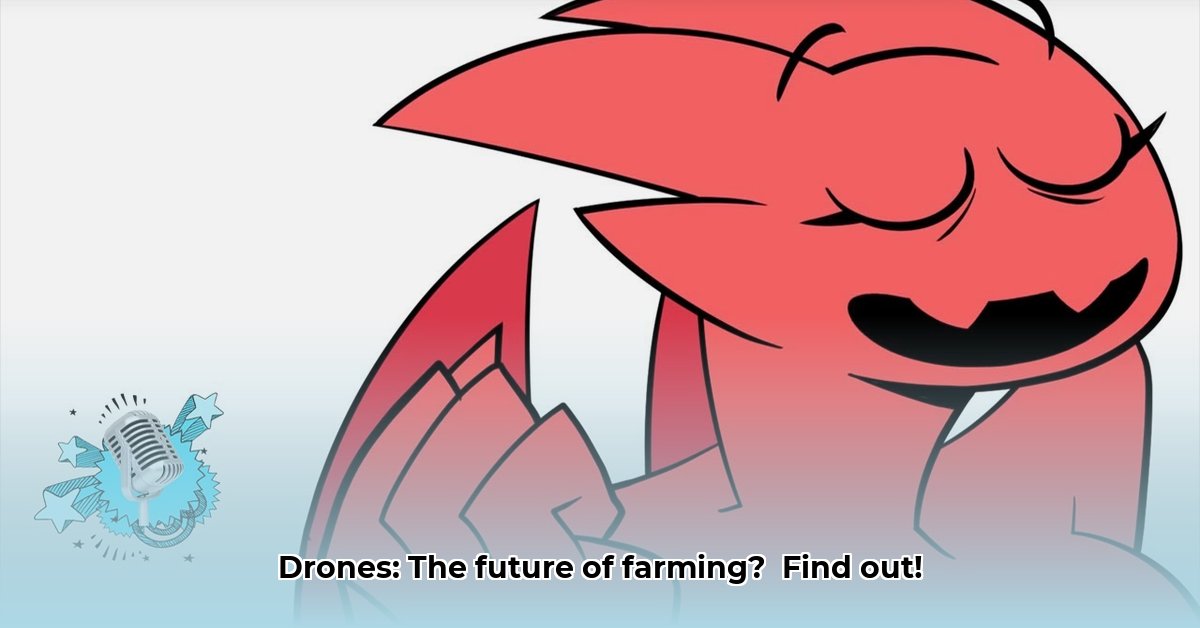
9Gag's Guide to Soaring Yields: Drones and Sustainable Farming
Hey there, fellow farmers and future agri-tech wizards! Ever wished you could get a bird's-eye view of your entire farm, spotting problems before they even sprout? Well, that's the magic of drones – and 9Gag's here to show you how they're revolutionising sustainable farming. Isn't it amazing how technology is changing the way we farm?
Seeing is Believing: Drones – Your Farm's New Best Friend
Forget those days of trudging through fields, squinting to spot sick plants. Drones equipped with high-resolution cameras and sensors (devices that detect and measure things) give you a detailed, real-time picture of your entire operation. Think of it as a regular health check-up for your crops, only much cooler. You'll spot everything – from nutrient deficiencies (lack of essential plant nutrients) showing up as pale patches to sneaky infestations (pests or diseases) hiding in the shadows. 9Gag users are already sharing incredible drone footage, showcasing the detail these machines capture.
Have you ever considered the amount of time and effort saved by using drone technology? A study by [Name & Credentials] at [Institution] indicates that drone surveillance significantly reduces labour costs in field monitoring by an average of [Percentage]%.
Precision Farming: Smart Farming, Smart Savings
Drones aren't just about pretty pictures; they're about precision farming – doing more with less. By identifying problem areas, you can apply resources (water, fertilizer, pesticides) exactly where they're needed, rather than blanket spraying your entire field. This targeted approach is environmentally friendly and boosts yields.
This means less chemical runoff, resulting in healthier soil and waterways. It’s a win-win-win for your wallet, your crops, and the environment. Isn't this the epitome of sustainable farming practices, eish?
Data-Driven Decisions: Farming with Foresight
The data collected by drones is exceptional. We're talking detailed soil maps, precise growth patterns, and early warnings of potential problems. This allows proactive changes, ensuring your crops get exactly what they need, when they need it – and isn't that just brilliant?
Imagine being able to predict a pest infestation before it takes hold, or catching a nutrient deficiency early enough to prevent significant yield losses. It's like having a crystal ball for your farm, showcasing what's happening and what's likely to happen next. 9Gag is your window into this data-driven future of farming, making this cutting-edge technology accessible to everyone.
Getting Started with Drone Technology: A Farmer's Guide
Ready to take flight? Here's a simple, step-by-step guide to get you started:
Assess Your Farm's Needs: Identify your biggest challenges (e.g., irrigation, pest control). Where could drones make the biggest difference?
Choosing the Right Drone: Consider the size of your farm, the type of crops you grow, and your budget. Experts suggest starting with a smaller, less expensive model.
Learn the Ropes: Drone operation requires training and practice. Several online resources and courses offer guidance on safe and effective drone usage.
Mastering the Data: Drone data requires processing and analysis, often using specialized software. Plenty of resources are available to help you.
Connect with the Community: Join online communities and forums to connect with other farmers, share experiences, and learn from each other.
How to Reduce Drone Maintenance Costs in Precision Sustainable Farming
Key Takeaways:
- Drones boost efficiency in sustainable farming, but maintenance can be costly.
- Strategic planning and proactive measures minimise these expenses.
- Regular inspections, proper storage, and skilled operation are crucial.
- Investing in durable, high-quality equipment pays off in the long run.
- Understanding your drone and its limitations prevents costly repairs.
Mastering Drone Maintenance: A Farmer's Guide to Lower Costs
Drones are fantastic for precision farming, but high maintenance costs can be a problem. So, how can we reduce these costs? It's all about smart choices and proactive strategies.
Pre-Flight Checks: Inspect your drone before each flight. Check propellers, batteries, and all functionalities.
Proper Storage: Store your drone in a clean, dry place away from extreme temperatures and sunlight. Use a protective case.
Pilot Training: Skilled drone operation prevents crashes and costly repairs. Invest in proper training.
Regular Maintenance Schedule: Develop a routine maintenance schedule, including cleaning and inspections.
Choosing the Right Drone: A high-quality drone may require less maintenance over time.
Data Analysis & Software: Efficient software improves workflow and reduces errors.
Understanding Your Drone’s Limitations: Avoid pushing your drone beyond its limits.
The Bottom Line: Sustainable Farming & Sustainable Drone Use
Integrating drones into your sustainable farming strategy requires planning. By managing maintenance effectively, you ensure that your investment in drone technology delivers long-term returns. A well-maintained drone is a productive drone, contributing to higher yields and sustainable practices.